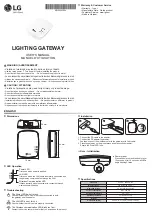
PDN Gateway Overview
▀ Features and Functionality - Base Software
▄ Cisco ASR 5x00 Packet Data Network Gateway Administration Guide
52
Used in conjunction with ECS, the DCCA interface uses a mechanism to allow the user to be informed of the charges to
be levied for a requested service. In addition, there are services such as gaming and advertising that may credit as well
as debit from a user account.
DCCA also supports the following:
Real-time Rate Service Information:
The ability to verify when end subscribers' accounts are exhausted or
expired; or deny additional chargeable events.
Support for Multiple Services
: The usage of multiple services within one subscriber session is supported.
Multiple Service support includes:
The ability to identify and process the service or group of services that are subject to different cost
structures.
Independent credit control of multiple services in a single credit control sub-session.
Important:
This functionality is available for use with the Enhanced Charging Service, which requires a session-
use license. For more information on ECS, refer to the
Enhanced Charging Service Administration Guide
.
Accept TCP Connections from DCCA Server
This feature allows for peer Diameter Credit Control Application servers to initiate a connection the NGME.
This feature allows peer diameter nodes to connect to the NGME on TCP port 3868 when the diameter server is
incapable of receiving diameter incoming diameter requests.
Important:
For more information on Diameter support, if you are using StarOS 12.3 or an earlier release, refer to
the
AAA and GTPP Interface Administration and Reference
. If you are using StarOS 14.0 or a later release, refer to the
AAA Interface Administration and Reference
.
Gy Interface Support
The Gy interface enables the wireless operator to implement a standardized interface for real time content based
charging with differentiated rates for time based and volume based charging.
As it is based on a quota mechanism, the Gy interface enables the wireless operator to spare expensive Prepaid System
resources.
As it enables time-, volume-, and event-based charging models, the Gy interface flexibly enables the operator to
implement charging models tailored to their service strategies.
The Gy interface provides a standardized Diameter interface for real time content based charging of data services. It is
based on the 3GPP standards and relies on quota allocation.
It provides an online charging interface that works with the ECS deep packet inspection feature. With Gy, customer
traffic can be gated and billed in an “online” or “prepaid” style. Both time- and volume-based charging models are
supported. In all of these models, differentiated rates can be applied to different services based on shallow or deep
packet inspection.
Gy is a Diameter interface. As such, it is implemented atop, and inherits features from, the Diameter Base Protocol. The
system supports the applicable Base network and application features, including directly connected, relayed or proxied
DCCA servers using TLS or plaintext TCP.
In the simplest possible installation, the system exchanges Gy Diameter messages over Diameter TCP links between
itself and one “prepay” server. For a more robust installation, multiple servers would be used. These servers may
















































